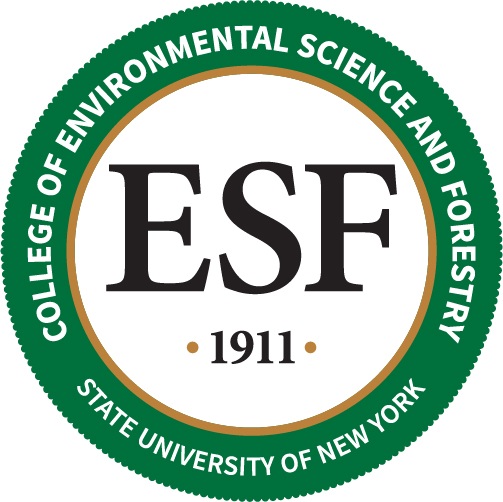Newswise — The combined heat-and-power system (CHP) housed within the SUNY College of Environmental Science and Forestry’s (ESF) new Gateway Center, which was officially opened today (Sept. 6), uses biomass pellets and natural gas to provide the campus with 65 percent of its heating needs and 20 percent of its electrical power.
“Today we ramp up testing as we connect each piece of technology into the operation. At full power the CHP reduces campuswide fossil fuel usage by 9,000 barrels of oil annually and lowers campus utility costs by 20 percent,” said ESF President Cornelius B. Murphy, Jr.
Some 200 people, including elected officials, friends of the college, business partners, students, faculty and staff attended the ribbon cutting.
The building is a centerpiece of the college’s Climate Action Plan, which states ESF’s commitment to achieving carbon neutrality by 2015. In addition, the Gateway Center, with its Trailhead Café, ESF College Bookstore, conference center and gathering areas, serves as a hub for campus activity. A portion of the college’s renowned Roosevelt Wildlife Collection is also on display.
The Gateway Center has a high-performance building envelope: a bioclimatic façade that controls thermal loss and solar gain to minimize building design loads. Building design is integrated with innovative energy systems connecting to the campus infrastructure.
Renewable fuels are used to help reduce ESF’s carbon footprint and the building showcases a variety of technologies to further research, community engagement and the college’s educational mission. The CHP will serve as a teaching tool, especially for students enrolled in ESF’s new sustainable energy management major and renewable energy minor.
The wood pellet*-fired gasifier is connected to a steam boiler that produces 8,000 pounds of high-pressure steam per hour. The high-pressure steam is run through a turbine to produce electricity and the low-pressure steam exiting the turbine is piped into five campus buildings to provide heat.
There are two natural gas-fired steam boilers to allow the system to efficiently meet peak and seasonal loads. The larger natural gas-fired boiler produces 10,000 pounds of steam per hour. Again, the high-pressure steam from this boiler is fed into the steam turbine producing electricity and the low-pressure steam is used for heat.
Because heat demands are low in the summer, a smaller natural gas steam boiler is put into operation producing just 2,000 pounds of low-pressure steam to meet any summer needs.
There are also three natural gas-fired microturbines that are part of the system. The microturbines burn the natural gas to produce heat, which spins the turbine to generate electricity. The exhaust heat from the process is captured and converted to low-pressure steam in a heat recovery boiler and distributed via heat exchangers through the Gateway Center plus Jahn Laboratory, Illick Hall, Moon Library and Baker Laboratory.
A passive solar thermal unit on the upper roof of the building produces hot water for domestic use while a garden roof comprising native New York plants on the second floor roof helps insulate the Gateway Center and reduce storm water runoff. The roof is open to campus visitors.
Air handlers maintain indoor air quality and distribute air through the ventilation system. Most traditional systems utilize only one but the Gateway design incorporated three air handlers, one for each of the three floors because each floor has different occupancy patterns and use.
“We have made the energy systems and sustainability features of the building prominent to engage all who enter with our message of a sustainable energy future,” said Michael Kelleher, ESF’s executive director of energy and sustainability.
Other key components of the Gateway Center CHP include an electrostatic precipitator that reduces particulate emissions by up to 90 percent and a system to collect ash, a byproduct of the wood pellet combustion process. The collected ash is used to return micronutrients to the ESF forested properties.
• Cost of the CHP system: $3.2 million
• Annual savings: $350,000
*The wood pellets come from Schuyler, N.Y., while ESF is working to develop wood pellets from shrub willow harvested from ESF plantations.
